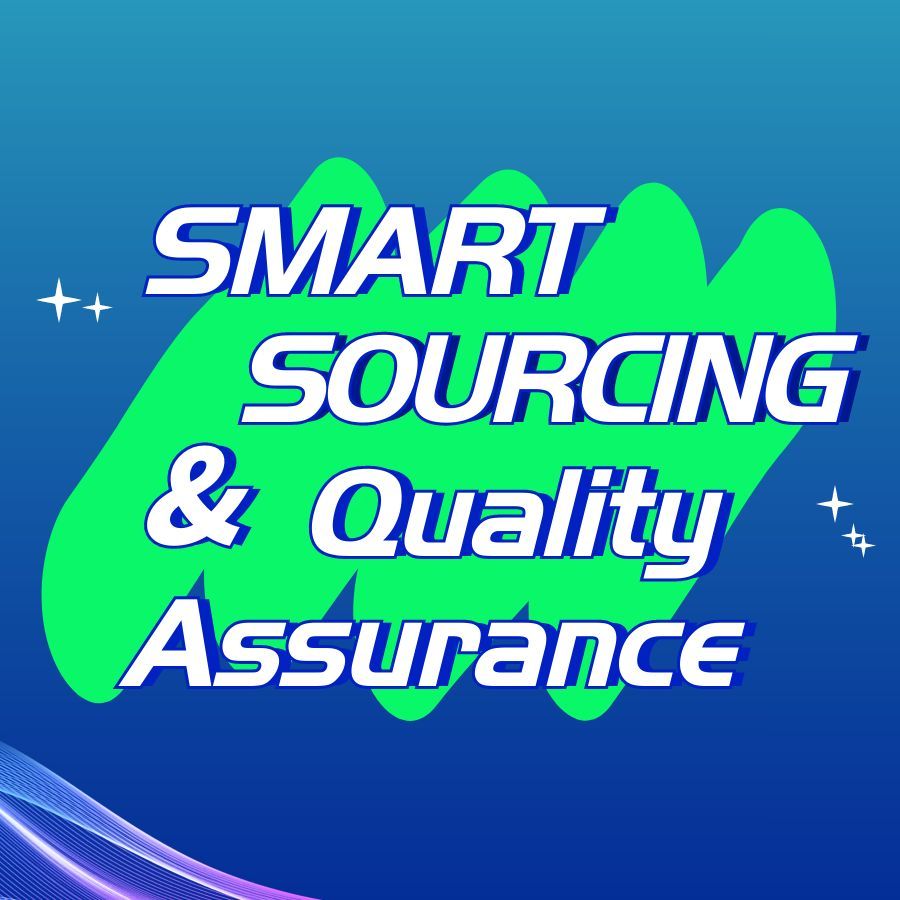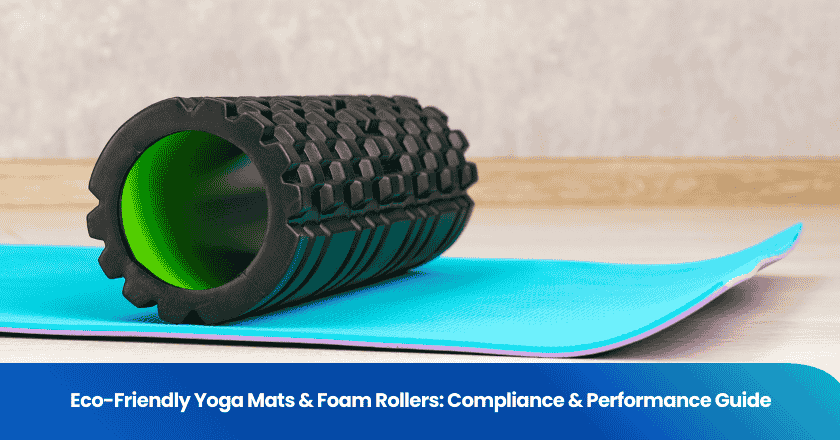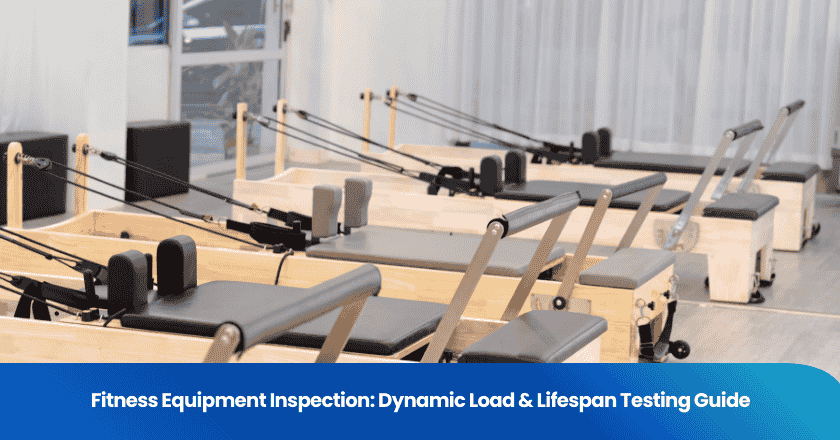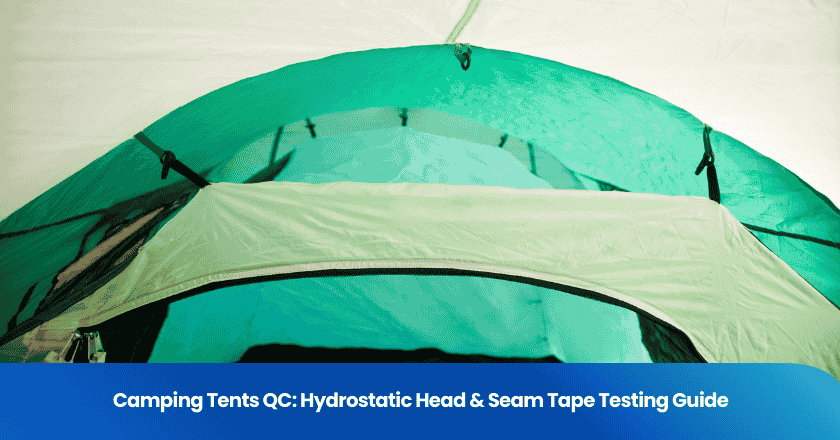
You can arrange a china product inspection by outlining your expectations and communicating them clearly with your supplier. Setting detailed requirements at the start helps you avoid common issues such as manufacturing flaws, inconsistent product quality, and regulatory compliance problems. For example, uneven glazing or minor chips in a batch of ceramic plates often lead to costly rework and shipment delays. Careful preparation and open communication will help you achieve reliable product inspections in china.
Key Takeaways
- Set clear inspection requirements before production starts. This helps avoid misunderstandings and costly rework.
- Include detailed inspection terms in your purchase order. This ensures both you and your supplier agree on quality expectations.
- Create a comprehensive inspection checklist. This tool guides inspections and helps reduce defects and compliance issues.
- Choose a qualified inspection service. Research companies with a strong track record and relevant experience in your industry.
- Review inspection reports carefully. Address any quality issues quickly to maintain high standards and avoid shipment delays.
Set Inspection Requirements
Setting clear inspection requirements forms the foundation of effective quality control in China. You need to define your expectations before production begins. This step helps you avoid misunderstandings, shipment delays, and costly rework.
Define Product Specs and Standards
Start by outlining every detail of your product. You should specify dimensions, materials, performance benchmarks, and acceptable tolerances. Use clear language and avoid ambiguity. When you define product specifications, include both your own quality standards and any relevant regulatory requirements.
Tip: Always reference both international standards (such as ISO 9001 or ASTM) and China’s GB standards. GB standards are mandatory in China and cover safety, performance, and labeling. These may differ from international standards in language, testing methods, and compliance details. Make sure your supplier understands which standards apply to your order.
A well-structured product specification should cover the following elements:
| Key Element | Description |
|---|---|
| Specific Quality Standards | Define clear benchmarks for product quality and incorporate certifications. |
| Detailed Inspection Procedures | Outline steps for inspections at various production stages. |
| Penalties for Non-Compliance | Specify financial penalties for failing to meet quality standards. |
| Approval and Rejection Processes | Define criteria for accepting or rejecting products. |
| Product Details | List dimensions, materials, and performance benchmarks. |
| Inspection Steps | Explain when and how checks will happen. |
| Flexibility | Allow for adjustments if production changes. |
By clarifying these points, you give your supplier a clear target and reduce the risk of disputes.
Include Inspection Terms in Purchase Order
You should always include inspection terms in your purchase order or contract. This step ensures that both you and your supplier agree on quality expectations, inspection procedures, and consequences for non-compliance.
Best practices for drafting inspection terms include:
- Request detailed quotes that break down all costs, including materials and labor.
- Clearly state payment terms, including deposits and balance payments.
- Specify quality control processes and acceptable error rates.
- Agree on shipping terms and customs responsibilities.
- Document everything in a clear contract, covering production specs and delivery timelines.
- Schedule regular inspections during production to catch issues early.
- Require thorough pre-shipment inspections to verify quality before shipping.
- Use statistical sampling techniques to ensure unbiased inspection results.
- Set Acceptable Quality Limit (AQL) levels and sampling plans.
- Book inspection schedules, such as pre-production, during production, and pre-shipment inspections.
Note: Including these terms in your purchase order protects your interests and sets clear expectations for your supplier.
Create an Inspection Checklist
An inspection checklist is a practical tool that guides both your supplier and the inspection team. It defines your product requirements, inspection standards, and compliance needs. A comprehensive checklist helps reduce defects, ensures regulatory compliance, and prevents customs issues.
Typical items in a product inspection checklist include:
- Product specifications and visual standards
- Functional tests and performance checks
- Packaging and labeling requirements
- Quantity verification
- Documentation review
A checklist helps you reduce the risk of shipment delays or rejections. The table below shows how each aspect contributes to smoother shipments:
| Aspect Evaluated | Importance |
|---|---|
| Compliance with standards | Ensures products meet client specifications and regulatory requirements. |
| Identification of defects | Helps in spotting issues before shipment, reducing the chance of rejections. |
| Verification of quantities | Confirms that the correct amount of product is shipped, preventing delays. |
| Proper labeling | Ensures that products are correctly labeled, which is crucial for customs. |
| Packaging | Proper packaging prevents damage during transit, avoiding shipment delays. |
You should tailor your checklist to the specific types of product inspections you plan to conduct. This approach ensures that every critical detail receives attention and that your products meet both your standards and regulatory requirements.
Choose Product Inspection Services in China
Selecting the right product inspection services in China ensures your products meet quality and compliance standards. You need to evaluate providers carefully to avoid costly mistakes and shipment delays.
Research Qualified Inspection Companies
Begin by identifying inspection companies with a strong track record in your industry. Look for agencies that understand your product category and have experience with similar goods. You should also check if they offer laboratory testing and have reliable equipment. A company with a local presence in China can respond quickly and communicate effectively with your suppliers.
Tip: Ask for references from previous clients and review online feedback to gauge the company’s reputation.
Here are key criteria to consider when evaluating inspection agencies:
| Criteria | Description |
|---|---|
| Agency Background | Experience in your industry and with similar products. |
| Laboratory Testing Capabilities | Reliability of testing equipment and capabilities. |
| Quality Control Procedures | Procedures to maintain high standards. |
| Online Reputation | References and online reviews from previous clients. |
| Local Presence | Local offices and personnel in China for better communication and inspections. |
Verify Credentials and Experience
You should confirm that the inspection company holds valid accreditations. In China, the China National Accreditation Service for Conformity Assessment (CNAS) accredits inspection bodies. This organization operates under strict national regulations. Some international organizations also authorize foreign testing bodies to operate in China, ensuring global standards.
- CNAS is the national accreditation body for inspection services in China.
- It operates under the State Administration for Market Regulation.
- Internationally recognized organizations also accredit inspection companies for specific product categories.
Compare Service Options and Pricing
Compare the range of product inspection services each provider offers. Some companies focus on pre-shipment inspections, while others provide during-production checks or factory audits. You should also review their reporting tools and the level of detail in their inspection reports.
Costs for product inspection services vary by inspection type and product category. For example:
| Inspection Type | Average Cost (USD per man-day) |
|---|---|
| Pre-production inspection (PPI) | 220 |
| During production inspection (DPI) | 250 |
| Final inspection (FI) | 230 - 280 |
| Factory audits | 210 - 290 |
Electronics inspections can range from $500 to $3,000, while textiles may cost $100 to $2,000. Always request detailed quotes and clarify what each service includes before making your decision.
Request Quotes and Confirm Details
Submit Inspection Requests
You should prepare all necessary details before you request a quote from a product inspection company in China. Inspection agencies expect you to provide accurate and complete information. This helps them understand your needs and offer precise pricing.
Here is a table showing the typical information you need to submit:
| Requirement | Description |
|---|---|
| Company Name | Company name is required. |
| Customer Name | Customer name is required. |
| Email Address | Enter a valid email address. |
| Confirm Email | Emails must match. |
| Phone Number | Enter a valid phone number. |
| Website | Enter a valid URL (including https://). |
| Product Name & Model | Product name & model is required. |
| Total Units | Enter a valid number of units. |
| Units Per Box | Enter a valid number of units per box. |
| Total Boxes | Value of Goods (include currency, e.g., $5,000). |
| Product Images | Upload product images (JPG, PNG, WebP). |
| Manufacturer Full Address | Manufacturer address is required. |
| Manufacturer Contact Name | Manufacturer contact name is required. |
| Manufacturer Contact Email | Manufacturer email is required. |
Tip: Double-check your information before submitting. Incomplete or incorrect details can delay the quoting process.
Review and Compare Quotes
Once you receive quotes, you should review each one carefully. Look beyond the price. Examine what each service includes, such as inspection scope, reporting format, and response time. Some companies may offer additional services like laboratory testing or follow-up inspections.
Create a checklist to compare:
- Inspection types covered (pre-production, during production, pre-shipment)
- Sample sizes and inspection methods
- Reporting timelines and formats
- Additional costs for travel or urgent requests
This approach helps you identify the best value for your needs.
Confirm Scope and Costs
Before you confirm your order, clarify the full scope of the inspection and all related costs. Several factors can affect the final price. Labor costs, travel expenses, product complexity, order size, defect history, and your specific requirements all play a role.
| Factor | Description |
|---|---|
| Labor Costs | The cost of hiring inspectors, which varies based on local wage rates. |
| Travel Expenses | Additional costs incurred if inspectors need to travel to the inspection site. |
| Product Complexity | More complex products require larger sample sizes, increasing inspection time and costs. |
| Order Size | Larger orders necessitate larger sample sizes for adequate inspection, impacting overall costs. |
| Defect History | Previous defect rates from suppliers can lead to increased sample sizes for thorough inspections. |
| Client Requirements | Specific client demands regarding inspection methods and sample sizes can affect pricing. |
Note: Always request a detailed breakdown of costs. This ensures you understand what you are paying for and helps prevent unexpected charges.
Prepare for China Product Inspection
Coordinate with Supplier
You should start by aligning your inspection schedule with your supplier. Clear communication ensures that the factory prepares the goods and documentation before the inspection team arrives. Notify your supplier of the inspection date and confirm that the products are finished and ready for sampling. Request a pre-inspection meeting with factory staff to clarify expectations and address any last-minute questions. This proactive approach helps prevent misunderstandings and delays.
Tip: Always confirm the production schedule and verify that the supplier has set aside inspection samples. This step reduces the risk of incomplete inspections.
Prepare Documents and Checklists
Proper documentation forms the backbone of a successful inspection. You need to gather and review all required paperwork to ensure compliance and smooth customs clearance. Missing or incorrect documents can cause significant delays or even shipment rejections, especially for sensitive goods.
Essential documents include:
- Commercial invoice with seller, buyer, and goods details
- Packing list specifying package contents and dimensions
- Bill of lading confirming receipt and transport
- Import/export license for regulated items
- Certificate of origin stating the manufacturing country
- Commodity inspection certificate for specific categories like food, toys, or medical devices
You should also prepare a detailed inspection checklist. This checklist guides the inspection team and ensures that every product requirement receives attention.
Pre-Audit Preparation
Thorough pre-audit preparation sets the stage for a smooth inspection. Follow these steps to maximize efficiency:
1. Confirm that the factory is ready for inspection.
2. Ask your supplier to prepare goods and documentation in advance.
3. Check that products are finished and available for sampling.
4. Verify that all paperwork, such as packing lists and quality certificates, is complete and accessible.
5. Request a pre-inspection meeting with factory staff.
6. Review the production schedule to avoid last-minute changes.
7. Ensure that inspection tools and samples are available.
By following these steps, you create a structured environment that supports accurate and efficient inspections. This preparation helps you avoid costly delays and ensures your products meet all requirements.
Schedule and Conduct Product Inspections in China
Arranging and executing product inspections in China requires careful planning and attention to detail. You must coordinate logistics, follow structured on-site procedures, and apply compliance checks to ensure your products meet international standards.
Set Inspection Date and Logistics
You should schedule your china product inspection as early as possible. Confirm the production timeline with your supplier and choose a date when goods are ready for sampling. Early communication helps you avoid delays and ensures inspectors have access to finished products.
Logistics play a critical role in successful product inspections in China. You may encounter challenges such as quality control issues, complex shipping arrangements, and customs regulations. The table below outlines common logistics challenges and practical solutions:
| Challenge | Description | Solution |
|---|---|---|
| Quality Control Issues | Products may not meet the expected quality, specifications, or industry standards. | Request samples and prototypes before bulk orders; use third-party inspection services. |
| Complex Shipping and Logistics | Choosing the wrong shipping method, delays at ports, and high freight costs can disrupt supply chains. | Understand shipping terms (FOB, CIF, EXW) to choose the best option; work with logistics partners. |
| Customs and Import Regulations | Understanding and complying with import regulations, tariffs, and customs duties can be confusing and costly. | Research import duties; ensure all necessary documentation is in order; seek customs clearance support. |
Tip: Always verify that all documents are complete and accurate before the inspection date. This step helps you avoid customs delays and shipment problems.
On-Site Inspection Steps
When you conduct product inspection at the factory, you must follow a structured process. Inspectors use standard procedures to evaluate product quality, compliance, and shipment accuracy. The main types of product inspections in China include:
| Inspection Type | Description |
|---|---|
| Pre-Production Inspection | Conducted before mass production to ensure components and materials meet specifications, minimizing risks of defects. |
| During-Production Inspection | Conducted when 20% of production is completed to identify issues early and verify compliance with specifications. |
| Pre-shipment Inspection | Conducted after production completion to evaluate product quality and compliance with standards, ensuring transparency and proactive defect resolution. |
| Container Loading Inspection | Ensures accurate shipment execution by verifying product quality and quantity during loading, preventing damage and ensuring compliance with Purchase Order specifications. |
You should communicate your inspection requirements clearly to the inspection team. Inspectors document findings using executive summaries, detailed analyses, and photographic evidence. They provide compliance documentation and real-time updates if they discover critical issues. You usually receive inspection reports within 24 to 48 hours, allowing you to make timely decisions.
Note: Request photographic documentation and executive summaries in your inspection report. These tools help you understand the results and address any non-conformities quickly.
Use of AQL and Compliance Checks
You must apply Acceptable Quality Level (AQL) standards during product inspections in China. AQL defines the maximum number of defects allowed in a batch. You select an inspection level—usually level II for standard orders. For example, if you produce 12,000 items at level II, inspectors will check 315 units. Defect levels range from 0 to 6.5, with standard thresholds set at 0, 2.5, and 4 for critical, major, and minor defects.
- AQL is implemented through inspection levels I, II, and III.
- Level II is the most common choice for most clients.
- Inspectors classify defects as critical, major, or minor based on your chosen AQL level.
Compliance checks are essential for products exported from China to the United States and European Union. You must verify export licensing, end use, and internal compliance programs. The table below summarizes key compliance checks:
| Compliance Check Type | Description |
|---|---|
| Export Licensing | Required for controlled items, with specific conditions and exclusions. |
| End Use Verification | Assessing if items are intended for controlled end uses, requiring careful consideration of red flags. |
| Internal Compliance Program | Necessary for obtaining certain licenses, including management commitment and training. |
You should review all compliance requirements before shipment. This step helps you avoid regulatory issues and ensures your products meet destination market standards.
Callout: Applying AQL and compliance checks during product inspections in China protects your business from costly defects and regulatory penalties.
By following these steps, you create a reliable process to conduct product inspection and maintain high standards for every shipment.
Review Results and Take Action
Analyze Inspection Reports
After the inspection, you receive a detailed report. You need to review this document carefully to understand the product’s condition. Focus on the key metrics that inspectors evaluate. These include:
- Measurements and fit
- Stitching and construction
- Fabric quality
- Trims and accessories
- Workmanship
- Packing and labeling
You should compare these findings against your original specifications. Look for any deviations or patterns that could signal larger issues. If you spot inconsistencies, address them before approving the shipment.
Address Quality Issues
When you identify problems in the inspection report, you must act quickly. Use a structured approach to resolve these issues and protect your business. The table below outlines effective strategies:
| Strategy | Description |
|---|---|
| Defining specifications | Set clear requirements for materials, tolerances, labeling, and packaging. |
| Inspection services | Arrange on-site checks throughout the production process. |
| Audit services | Evaluate factory capability, social compliance, and ethical sourcing practices. |
| Corrective actions | Require suppliers to take steps if standards are not met. |
| Continuous cycle | Treat quality control as an ongoing process to drive improvement and prevent poor quality. |
You can also follow these steps for a thorough response:
1. Pre-Production Inspection: Check materials before manufacturing starts.
2. During Production Checks: Inspect products at regular intervals.
3. Final Random Inspection: Review finished goods for compliance.
4. Loading Supervision: Confirm correct packing and shipping conditions.
Approve Shipment or Re-Inspect
Once you address all issues, decide whether to approve the shipment or request a re-inspection. If the products meet your standards and the quality control process confirms compliance, you can authorize shipment. If problems remain, schedule another inspection to ensure all corrections are complete. This approach helps you maintain high standards and avoid costly returns or disputes.
Tip: Always document your decisions and communicate clearly with your supplier to prevent misunderstandings.
Arranging product inspections in china requires a structured approach. You set clear requirements, select reliable providers, and follow up proactively. This process helps you avoid common pitfalls, such as documentation errors or inspection issues. The table below highlights how a structured china product inspection process improves supply chain quality:
| Key Point | Explanation |
|---|---|
| Early Risk Identification | You spot risks before they disrupt your supply chain. |
| Compliance Assurance | You ensure suppliers meet your quality standards. |
| Proactive Quality Management | Routine checks prevent costly defects. |
To ensure smooth product inspections in china, always communicate clearly, visit factories when possible, and use detailed checklists. This approach gives you peace of mind and consistent results.
FAQ
What is the best time to schedule a product inspection in China?
You should schedule inspections after production finishes but before shipment. This timing allows you to catch defects early and avoid delays.
Tip: Confirm the production timeline with your supplier to ensure products are ready for inspection.
How do you choose the right inspection company?
You should compare companies based on experience, accreditation, and service scope.
What documents do you need for a product inspection?
You need a purchase order, product specifications, packing list, and compliance certificates.
- Purchase order
- Product specs
- Packing list
- Compliance certificates
How do you handle inspection failures?
You should review the report, communicate with your supplier, and request corrective actions.
Note: Schedule a re-inspection if issues remain unresolved.
Can you attend the inspection in person?
You can attend inspections or appoint a representative. This approach helps you verify product quality directly and address concerns on-site.
Grow your business with TradeAider Service
Click the button below to directly enter the TradeAider Service System. The simple steps from booking and payment to receiving reports are easy to operate.




